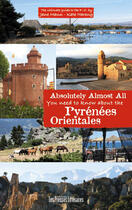Résumé:
As the century turned Aristide Maillol was simplifying the sensuous lines of his monumental sculptures in the small seaside town of Banyuls-sur-Mer. By 1905 Matisse and Derain were exploding pure colour all over their Fauvist paintings just along the coast in Collioure. George Daniel de Monfreid... Voir plus
As the century turned Aristide Maillol was simplifying the sensuous lines of his monumental sculptures in the small seaside town of Banyuls-sur-Mer. By 1905 Matisse and Derain were exploding pure colour all over their Fauvist paintings just along the coast in Collioure. George Daniel de Monfreid was taking delivery of Gauguin's canvases from the South Seas at his Château St Clément in Corneilla-de-Conflent and sharing them with Gustave Fayet of the Abbaye de Fontfroide near Narbonne. And, a few years later, Frank Burty Haviland, Manolo and Déodat de Séverac, whilst on a visit to the sculptor Maillol, discovered Céret. When in 1910 they were joined by Picasso, then by Braque and Juan Gris, Céret was well on the way to becoming known as the Mecca of Cubism.
Why the Roussillon? How did the revolution reach Paris and then the world from two obscure towns on the Mediterranean edge of the Pyrenees? How did the local painters and collectors contribute to the revolution? What were the links with the Paris dealers and the all important Salons? Who were the artists' wives and mistresses? And what mark have they left here?...
In Art Revolution in the Roussillon their stories come alive. Tales of artists born and bred in this remote and at the time little known corner of France are intertwined with the stories of the visiting artists from Paris who were challenging and changing the face of modern art. The gathering of these tales and the exploration of the Roussillon's recent art history has proved has proved a fascinating task.
Donner votre avis

















